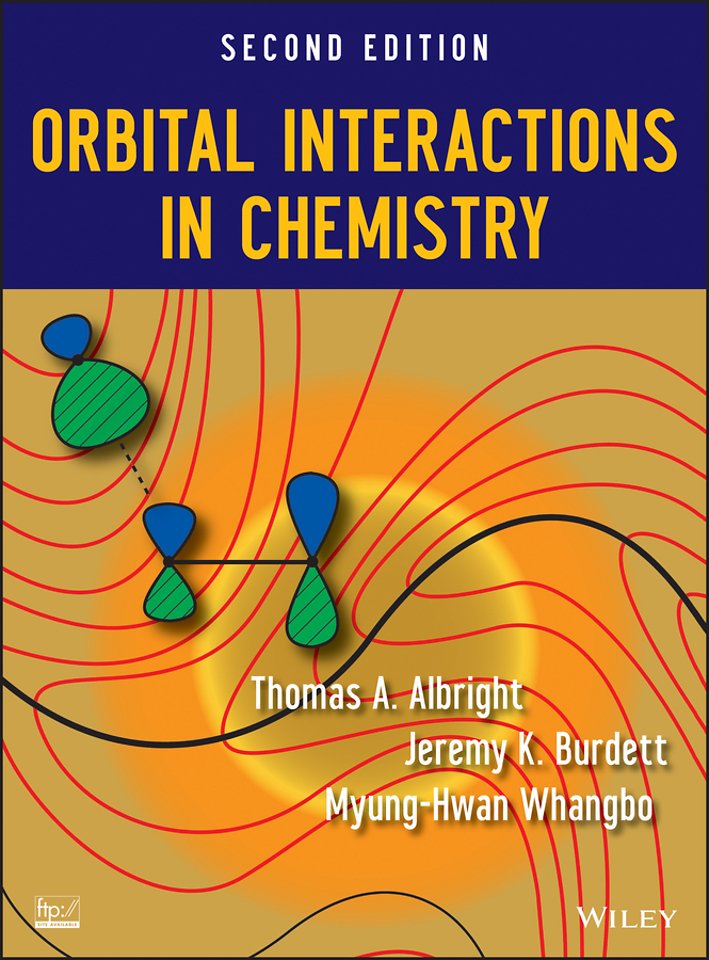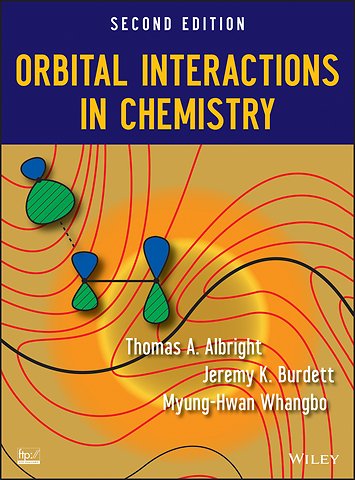Orbital Interactions in Chemistry, Second Edition
Samenvatting
This new edition of a bestselling reference on applied molecular orbital theory covers organic, organometallic, inorganic, and solid state chemistry, demonstrating how common orbital situations arise through the whole chemical spectrum. This latest edition features a new chapter on current concepts in solid state chemistry, examples of recent advances in the field, more detailed information on trends in the periodic table, expanded information on the mechanics of group theory, and a new chapter on metals. An essential reference for chemists in the areas of organic, inorganic, solid state, and computational chemistry.
Specificaties
Inhoudsopgave
<p>About the Authors xiii</p>
<p>Chapter 1 Atomic and Molecular Orbitals 1</p>
<p>1.1 Introduction 1</p>
<p>1.2 Atomic Orbitals 1</p>
<p>1.3 Molecular Orbitals 7</p>
<p>Chapter 2 Concepts of Bonding and Orbital Interaction 15</p>
<p>2.1 Orbital Interaction Energy 15</p>
<p>2.2 Molecular Orbital Coefficients 20</p>
<p>2.3 The Two–Orbital Problem–Summary 24</p>
<p>2.4 Electron Density Distribution 26</p>
<p>Chapter 3 Perturbational Molecular Orbital Theory 32</p>
<p>3.1 Introduction 32</p>
<p>3.2 Intermolecular Perturbation 35</p>
<p>3.3 Linear H3, HF, and the Three–Orbital Problem 38</p>
<p>3.4 Degenerate Perturbation 43</p>
<p>Chapter 4 Symmetry 47</p>
<p>4.1 Introduction 47</p>
<p>4.2 Symmetry of Molecules 47</p>
<p>4.3 Representations of Groups 53</p>
<p>4.4 Symmetry Properties of Orbitals 59</p>
<p>4.5 Symmetry–Adapted Wavefunctions 62</p>
<p>4.6 Direct Products 65</p>
<p>4.7 Symmetry Properties, Integrals, and the Noncrossing Rule 67</p>
<p>4.8 Principles of Orbital Construction Using Symmetry Principles 69</p>
<p>4.9 Symmetry Properties of Molecular Vibrations 73</p>
<p>Chapter 5 Molecular Orbital Construction from Fragment Orbitals 78</p>
<p>5.1 Introduction 78</p>
<p>5.2 Triangular H3 78</p>
<p>5.3 Rectangular and Square Planar H4 82</p>
<p>5.4 Tetrahedral H4 84</p>
<p>5.5 Linear H4 86</p>
<p>5.6 Pentagonal H5 and Hexagonal H6 88</p>
<p>5.7 Orbitals of Cyclic Systems 91</p>
<p>Chapter 6 Molecular Orbitals of Diatomic Molecules and Electronegativity Perturbation 97</p>
<p>6.1 Introduction 97</p>
<p>6.2 Orbital Hybridization 98</p>
<p>6.3 Molecular Orbitals of Diatomic Molecules 99</p>
<p>6.4 Electronegativity Perturbation 105</p>
<p>6.5 Photoelectron Spectroscopy and Through–Bond Conjugation 112</p>
<p>Chapter 7 Molecular Orbitals and Geometrical Perturbation 123</p>
<p>7.1 Molecular Orbitals of AH2 123</p>
<p>7.2 Geometrical Perturbation 128</p>
<p>7.3 Walsh Diagrams 131</p>
<p>7.4 Jahn–Teller Distortions 134</p>
<p>7.5 Bond Orbitals and Photoelectron Spectra Of AH2 Molecules 141</p>
<p>Chapter 8 State Wavefunctions and State Energies 151</p>
<p>8.1 Introduction 151</p>
<p>8.2 The Molecular Hamiltonian and State Wavefunctions 152</p>
<p>8.3 Fock Operator 154</p>
<p>8.4 State Energy 156</p>
<p>8.5 Excitation Energy 157</p>
<p>8.6 Ionization Potential and Electron Affinity 160</p>
<p>8.7 Electron Density Distribution and Magnitudes of Coulomb and Exchange Repulsions 160</p>
<p>8.8 Low versus High Spin States 162</p>
<p>8.9 Electron–Electron Repulsion and Charged Species 164</p>
<p>8.10 Configuration Interaction 165</p>
<p>8.11 Toward More Quantitative Treatments 170</p>
<p>8.12 The Density Functional Method 174</p>
<p>Chapter 9 Molecular Orbitals of Small Building Blocks 179</p>
<p>9.1 Introduction 179</p>
<p>9.2 The AH System 179</p>
<p>9.3 Shapes of AH3 Systems 182</p>
<p>9.4 p–Bonding Effects of Ligands 190</p>
<p>9.5 The AH4 System 193</p>
<p>9.6 The AHn Series–Some Generalizations 198</p>
<p>Chapter 10 Molecules with Two Heavy Atoms 204</p>
<p>10.1 Introduction 204</p>
<p>10.2 A2H6 Systems 204</p>
<p>10.3 12–Electron A2H4 Systems 208</p>
<p>10.4 14–Electron AH2BH2 Systems 220</p>
<p>10.5 AH3BH2 Systems 223</p>
<p>10.6 AH3BH Systems 232</p>
<p>Chapter 11 Orbital Interactions through Space and through Bonds 241</p>
<p>11.1 Introduction 241</p>
<p>11.2 In–Plane s orbitals of Small Rings 241</p>
<p>11.3 Through–Bond Interaction 253</p>
<p>11.3.1 The Nature of Through–Bond Coupling 253</p>
<p>11.3.2 Other Through–Bond Coupling Units 256</p>
<p>11.4 Breaking a C––C Bond 258</p>
<p>Chapter 12 Polyenes and Conjugated Systems 272</p>
<p>12.1 Acyclic Polyenes 272</p>
<p>12.2 Huckel Theory 274</p>
<p>12.3 Cyclic Systems 277</p>
<p>12.4 Spin Polarization 285</p>
<p>12.5 Low– versus High–Spin States in Polyenes 289</p>
<p>12.6 Cross–Conjugated Polyenes 291</p>
<p>12.7 Perturbations of Cyclic Systems 294</p>
<p>12.8 Conjugation in Three Dimensions 303</p>
<p>Chapter 13 Solids 313</p>
<p>13.1 Energy Bands 313</p>
<p>13.2 Distortions in One–Dimensional Systems 328</p>
<p>13.3 Other One–Dimensional Systems 334</p>
<p>13.4 Two– and Three–Dimensional Systems 339</p>
<p>13.5 Electron Counting and Structure 350</p>
<p>13.6 High–Spin and Low–Spin Considerations 353</p>
<p>Chapter 14 Hypervalent Molecules 359</p>
<p>14.1 Orbitals of Octahedrally Based Molecules 359</p>
<p>14.2 Solid–State Hypervalent Compounds 373</p>
<p>14.3 Geometries of Hypervalent Molecules 383</p>
<p>Chapter 15 Transition Metal Complexes: A Starting Point at the Octahedron 401</p>
<p>15.1 Introduction 401</p>
<p>15.2 Octahedral ML6 402</p>
<p>15.3 p–Effects in an Octahedron 406</p>
<p>15.4 Distortions from an Octahedral Geometry 416</p>
<p>15.5 The Octahedron in the Solid State 423</p>
<p>Chapter 16 Square Planar, Tetrahedral ML4 Complexes, and Electron Counting 436</p>
<p>16.1 Introduction 436</p>
<p>16.2 The Square Planar ML4 Molecule 436</p>
<p>16.3 Electron Counting 438</p>
<p>16.4 The Square Planar–Tetrahedral ML4 Interconversion 448</p>
<p>16.5 The Solid State 453</p>
<p>Chapter 17 Five Coordination 465</p>
<p>17.1 Introduction 465</p>
<p>17.2 The C4v ML5 Fragment 466</p>
<p>17.3 Five Coordination 468</p>
<p>17.4 Molecules Built Up from ML5 Fragments 480</p>
<p>17.5 Pentacoordinate Nitrosyls 489</p>
<p>17.6 Square Pyramids in The Solid State 492</p>
<p>Chapter 18 The C2v ML3 Fragment 503</p>
<p>18.1 Introduction 503</p>
<p>18.2 The Orbitals of A C2v ML3 Fragment 503</p>
<p>18.3 ML3–Containing Metallacycles 511</p>
<p>18.4 Comparison of C2v ML3 and C4v ML5 Fragments 518</p>
<p>Chapter 19 The ML2 and ML4 Fragments 527</p>
<p>19.1 Development of the C2v ML4 Fragment Orbitals 527</p>
<p>19.2 The Fe(CO)4 Story 529</p>
<p>19.3 Olefin–ML4 Complexes and M2L8 Dimers 533</p>
<p>19.4 The C2v ML2 Fragment 537</p>
<p>19.5 Polyene–ML2 Complexes 539</p>
<p>19.6 Reductive Elimination and Oxidative Addition 552</p>
<p>Chapter 20 Complexes of ML3, MCp and Cp2M 570</p>
<p>20.1 Derivation of Orbitals for a C3v ML3 Fragment 570</p>
<p>20.2 The CpM Fragment Orbitals 582</p>
<p>20.3 Cp2M and Metallocenes 592</p>
<p>20.4 Cp2MLn Complexes 595</p>
<p>Chapter 21 The Isolobal Analogy 616</p>
<p>21.1 Introduction 616</p>
<p>21.2 Generation of Isolobal Fragments 617</p>
<p>21.3 Caveats 621</p>
<p>21.4 Illustrations of the Isolobal Analogy 623</p>
<p>21.5 Reactions 634</p>
<p>21.6 Extensions 639</p>
<p>Chapter 22 Cluster Compounds 653</p>
<p>22.1 Types of Cluster Compounds 653</p>
<p>22.2 Cluster Orbitals 657</p>
<p>22.3 Wade s Rules 660</p>
<p>22.4 Violations 671</p>
<p>22.5 Extensions 677</p>
<p>Chapter 23 Chemistry on the Surface 691</p>
<p>23.1 Introduction 691</p>
<p>23.2 General Structural Considerations 693</p>
<p>23.3 General Considerations of Adsorption on Surfaces 696</p>
<p>23.4 Diatomics on a Surface 699</p>
<p>23.5 The Surface of Semiconductors 721</p>
<p>Chapter 24 Magnetic Properties 735</p>
<p>24.1 Introduction 735</p>
<p>24.2 The Magnetic Insulating State 736</p>
<p>24.3 Properties Associated with the Magnetic Moment 741</p>
<p>24.4 Symmetric Spin Exchange 745</p>
<p>24.5 Magnetic Structure 754</p>
<p>24.6 The Energy Gap in the Magnetic Energy Spectrum 763</p>
<p>24.7 Spin Orbit Coupling 766</p>
<p>24.8 What Appears versus What Is 778</p>
<p>24.9 Model Hamiltonians Beyond the Level of Spin Exchange 785</p>
<p>24.10 Summary Remarks 785</p>
<p>Problems 786</p>
<p>References 789</p>
<p>Appendix I Perturbational Molecular Orbital Theory 793</p>
<p>Appendix II Some Common Group Tables 803</p>
<p>Appendix III Normal Modes for Some Common Structural Types 808</p>
<p>Index 813</p>

